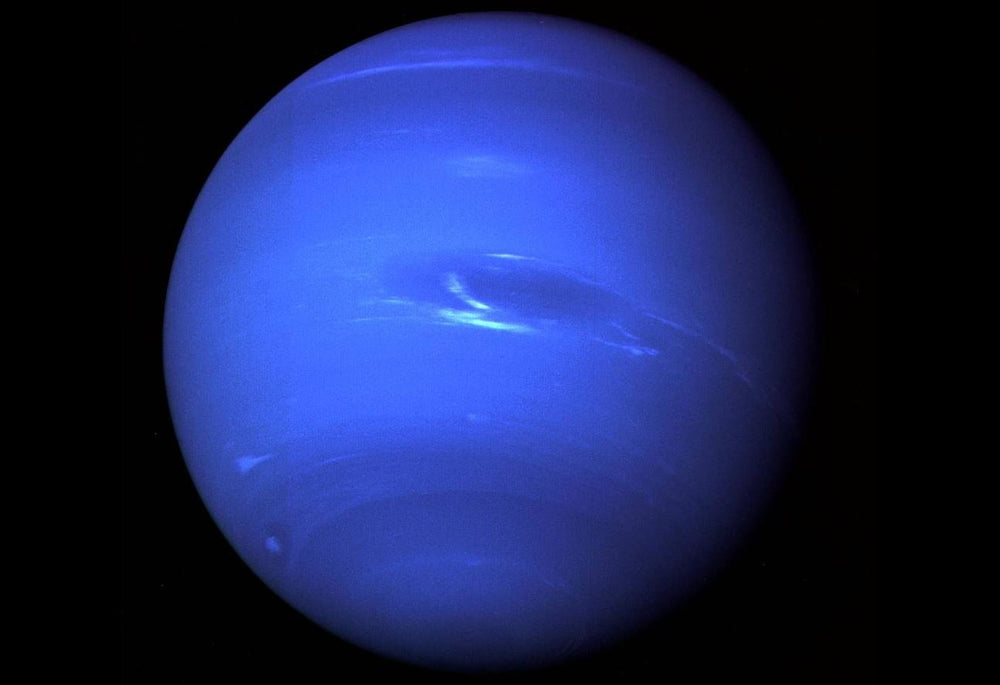How Long Does It Take to Get to Neptune
Neptune, the eighth and farthest planet from the Sun, is a fascinating world with its vibrant blue color and mysterious atmosphere. If you've ever wondered about the time it takes to reach Neptune, this article will provide insights into the journey and the factors that influence travel time.
Understanding the Distance to Neptune
Before we delve into the specifics, let's grasp the immense distances involved in interplanetary travel. Neptune is located at an average distance of about 4.5 billion kilometers (2.8 billion miles) from Earth. To put this into perspective, it is approximately 30 times the average distance between the Earth and the Sun, which is about 149.6 million kilometers (93 million miles).
Traveling to Neptune with Current Technologies
Reaching Neptune with current technologies presents significant challenges due to its considerable distance from Earth. The time it takes to reach Neptune depends on several factors, including the launch window, spacecraft speed, trajectory, and the use of gravity assists.
On average, a direct mission to Neptune using conventional propulsion systems would take approximately 12 to 14 years. This estimate includes the time required to escape Earth's gravity, perform course corrections, and enter into Neptune's orbit.
Historical Missions to Neptune
To date, the only spacecraft to have visited Neptune is NASA's Voyager 2. Launched in 1977, Voyager 2 conducted a flyby of Neptune in 1989, providing valuable data about the planet's atmosphere, weather patterns, rings, and moons. Voyager 2 took approximately 12 years to reach Neptune after its launch.
Future Missions and Possibilities
While there are currently no specific missions planned to return to Neptune, the prospect of future missions remains an exciting area of exploration. As technology advances and our understanding of the outer solar system deepens, there may be future missions dedicated to studying Neptune more comprehensively. These missions could provide unprecedented insights into the planet's composition, atmosphere, and the mysteries that lie within.
The Challenges of Deep Space Travel
Reaching Neptune and other distant planets presents unique challenges due to the immense distances and extended travel durations involved. Advanced propulsion systems, such as ion propulsion or nuclear propulsion, may offer potential solutions to reduce travel time. These technologies are being studied and developed for future interplanetary missions.
Exploring the Mysteries of Neptune
Neptune, with its captivating deep blue hue and intriguing features, beckons us to delve into its secrets. Let's further explore some of the enigmatic aspects that make Neptune a planet of immense scientific interest.
Neptune's Dynamic Atmosphere
One of the most striking features of Neptune is its turbulent and dynamic atmosphere. It exhibits powerful storms, including the famous Great Dark Spot, which was observed by the Voyager 2 mission. Studying the composition, weather patterns, and the intricate dynamics of Neptune's atmosphere offers valuable insights into the behavior of planetary atmospheres and their complex interactions.
The Great Dark Spot and Other Atmospheric Phenomena
The Great Dark Spot, a massive storm system on Neptune, highlights the dynamic nature of the planet's atmosphere. Although the Great Dark Spot observed by Voyager 2 has since dissipated, Neptune continues to exhibit other atmospheric phenomena, such as smaller storms and vortices. Investigating these atmospheric features helps scientists understand the forces that shape and influence the weather patterns on this distant planet.
Neptune's Rings and Moons
Neptune possesses a system of rings, although they are faint compared to Saturn's prominent rings. Studying these rings provides insights into the dynamics of ring systems and the interactions between the rings and the planet's gravitational field. Additionally, Neptune has a collection of intriguing moons, including Triton, a moon with unique characteristics. Exploring the moons of Neptune offers opportunities to examine the diverse geological features and unravel the mysteries of their formation and evolution.
Neptune's Magnetic Field
Neptune has a powerful magnetic field, similar to that of Earth, but it is tilted and offset from the planet's rotational axis. This magnetic field, generated by the motion of conductive material within the planet, provides clues about the internal structure and dynamics of Neptune. Investigating the unique properties of Neptune's magnetic field contributes to our understanding of planetary magnetism and its role in shaping the space environment around the planet.
Future Missions and Discoveries
While there are no immediate plans for a specific mission to return to Neptune, ongoing advancements in technology and space exploration may pave the way for future missions. These missions could involve dedicated orbiters or probes designed to study Neptune in greater detail, providing unprecedented insights into its atmosphere, magnetic field, rings, and moons. Future discoveries may revolutionize our understanding of this distant ice giant and the processes that govern its behavior.
The Unending Pursuit of Knowledge
The journey to Neptune may be lengthy, but the knowledge gained from exploring this captivating planet is immeasurable. Neptune's dynamic atmosphere, rings, moons, and magnetic field offer endless opportunities for scientific exploration. Each mission deepens our understanding of the mysteries that lie within this distant world and expands our knowledge of the outer reaches of our solar system.
Conclusion
In conclusion, the time it takes to reach Neptune is approximately 12 to 14 years with current technologies. The vast distance and the complexity of deep space exploration make it a challenging but thrilling endeavor. While historical missions like Voyager 2 have provided valuable data, there is much more to learn about Neptune. As our exploration of the outer solar system progresses and future missions are planned, each step brings us closer to unraveling the mysteries of this fascinating planet.

